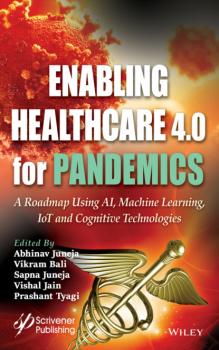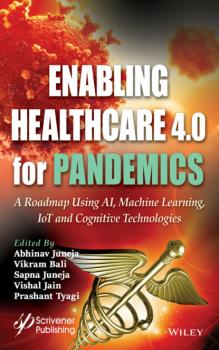John Wiley & Sons Limited
Все книги издательства John Wiley & Sons LimitedReception of Mesopotamia on Film
Explore an insightful account of the reception of Mesopotamia in modern cinema In Reception of Mesopotamia on Film , Dr. Maria de Fátima Rosa explores how the Ancient Mesopotamian civilization was portrayed by the movie industry, especially in America and Italy, and how it was used to convey analogies between ancient and contemporary cultural and moral contexts. Spanning a period that stretches from the beginning of the 20th century to the present day, the book explores how the Assyrian and Babylonian elites, particularly kings, queens, and priestesses, were perceived and represented on screen by filmmakers. A focus on the role played by Ancient Near Eastern women and on the polytheistic religion practiced in the land between the rivers will be provided. This book also offers an insightful interpretation of the bias message that most of these films portray and how the Mesopotamian past and Antiquity brought to light and stimulated the debate on emerging 20th century political and social issues. The book also offers: A thorough introduction to the Old Testament paradigm and the romanticism of classical authors A comprehensive exploration of the literary reception of the Mesopotamian legacy and its staging Practical discussions of the rediscovery, appropriation, and visual reproduction of Assyria and Babylonia In-depth examinations of cinematic genres and cinematographic contexts Perfect for students of the history of antiquity and cinematographic history, Reception of Mesopotamia on Film is also an invaluable resource for anyone with an interest in reception studies.
Practical Procedures in Dental Occlusion
PRACTICAL PROCEDURES IN DENTAL OCCLUSION A robust and accessible resource on occlusion for general dental practitioners Practical Procedures in Dental Occlusion delivers a solid and reliable exploration of dental occlusion. The book offers practical and accessible information about evidence-based techniques applicable to everyday clinical situations encountered in general practice. The authors provide a straightforward guide to the optimisation of restorative treatment outcomes, including occlusion in simple and advanced restorative care. The inclusion of questions at the end of the book, a glossary of useful terms and phrases in occlusion encourages self-assessment. Readers will also find: Thorough introductions to common prosthodontic terms, neuromuscular philosophies, and the equipment and techniques used in occlusal examination Practical explorations of typical problems faced by practitioners when recording occlusal contacts using different articulating papers Overviews of “high crown” clinical scenarios, including the importance of opposing alginate impressions and cast mounting An insightful treatment of the clinical scenario of a fractured upper central incisor composite restoration Perfect for undergraduate dental students and general dental practitioners, Practical Procedures in Dental Occlusion is a valuable resource for those seeking a systematic and logical treatment of the management of occlusal problems.
Enabling Healthcare 4.0 for Pandemics
In this timely book, the editors explore the current state of practice in Healthcare 4.0 and provide a roadmap for harnessing artificial intelligence, machine learning, and Internet of Things, as well as other modern cognitive technologies, to aid in dealing with the various aspects of an emergency pandemic outbreak. There is a need to improvise health care systems with the intervention of modern computing and data management platforms to increase the reliability of human processes and life expectancy. There is an urgent need to come up with smart IoT-based systems which can aid in the detection, prevention and cure of these pandemics with more precision. There are a lot of challenges to overcome but this book proposes a new approach to organize the technological warfare for tackling future pandemics
Islamicate Cosmopolitan Spirit
Discover the essence of the Islamicate Cosmopolitan Spirit and what it has contributed to societies across the ages In Islamicate Cosmopolitan Spirit, author and expert, Bruce B. Lawrence, delivers a spiritual elan filtered through cultural practices and artefacts. Neither juridical nor creedal, the book expresses a desire for the just and the beautiful. The author sets out an original and fascinating theory, that Islamicate cosmopolitanism marks a new turn in global history. An unceasing, self-critical pursuit of truth, hitched to both beauty and justice, its history is marked by male elites who were scientific exemplars in the pre-modern period. In the modern period, these exemplars include women as well as men, artists as well as scientists. The Islamicate Cosmopolitans have had special impact across the Afro-Eurasian ecumene at the heart of civilized exchange between multiple groups with competing yet convergent interests. The Islamicate Cosmopolitan Spirit is a boundary busting challenge to those who think of the world merely in terms of an “Arab” Middle East. Readers will also benefit from: A thorough introduction to the Islamicate Cosmopolitan Spirit across time and space An exploration of premodern Afro-Eurasia and Persianate Culture in the Indian Ocean A practical discussion of the future of the Islamicate Cosmopolitan Spirit Perfect for all students of Islamicate civilization, both traditional and progressive, Islamicate Cosmopolitan Spirit will also earn a place in the libraries of general readers of world history and those grounded in the larger history of Islamicate Asia will find a perspective that centers their own contribution to the Islamicate Cosmopolitan Spirit.
Energy
Energy Global energy demand has more than doubled since 1970. The use of energy is strongly related to almost every conceivable aspect of development: wealth, health, nutrition, water, infrastructure, education and even life expectancy itself are strongly and significantly related to the consumption of energy per capita. Many development indicators are strongly related to per-capita energy consumption. Fossil fuel is the most conventional source of energy but also increases greenhouse gas emissions. The economic development of many countries has come at the cost of the environment. However, it should not be presumed that a reconciliation of the two is not possible.The nexus concept is the interconnection between the resource energy, water, food, land, and climate. Such interconnections enable us to address trade-offs and seek synergies among them. Energy, water, food, land, and climate are essential resources of our natural environment and support our quality of life. Competition between these resources is increasing globally and is exacerbated by climate change. Improving resilience and securing resource availability would require improving resource efficiency. Many policies and programs are announced nationally and internationally for replacing the conventional mode and also emphasizing on conservation of fossil fuels and reuse of exhausted energy, so a gap in implications and outcomes can be broadly traced by comparing the data.This book aims to highlight problems and solutions related to conventional energy utilization, formation, and multitudes of ecological impacts and tools for the conservation of fossil fuels. The book also discusses modern energy services as one of the sustainable development goals and how the pressure on resource energy disturbs the natural flows. The recent advances in alternative energy sources and their possible future growth are discussed and on how conventional energy leads to greenhouse gas formation, which reduces energy use efficiency. The different policies and models operating is also addressed, and the gaps that remained between them. Climate change poses a challenge for renewable energy, and thus it is essential to identify the factors that would reduce the possibility of relying on sustainable energy sources.This book will be of interest to researchers and stakeholders, students, industries, NGOs, and governmental agencies directly or indirectly associated with energy research.
The Art of Waking People Up
In The Art of Waking People Up authors Kenneth Cloke and Joan Goldsmith draw on more than thirty years of practical experience with hundreds of organizations– from Fortune 500 companies to government agencies, schools, and nonprofits– to reveal new ways of giving and receiving feedback that maximize personal and organizational change and foster lifelong learning. They show how organizations can develop the systems, processes, techniques, and relationships that affirm, rather than undermine, the intelligence and humanity of their employees. This important resource is filled with the necessary tools, interventions, and strategies managers can use to encourage their employees to speak, hear, absorb, and use the information they need to improve the way they work.









